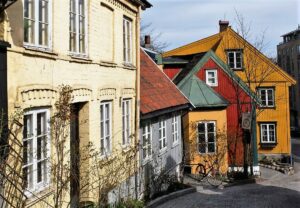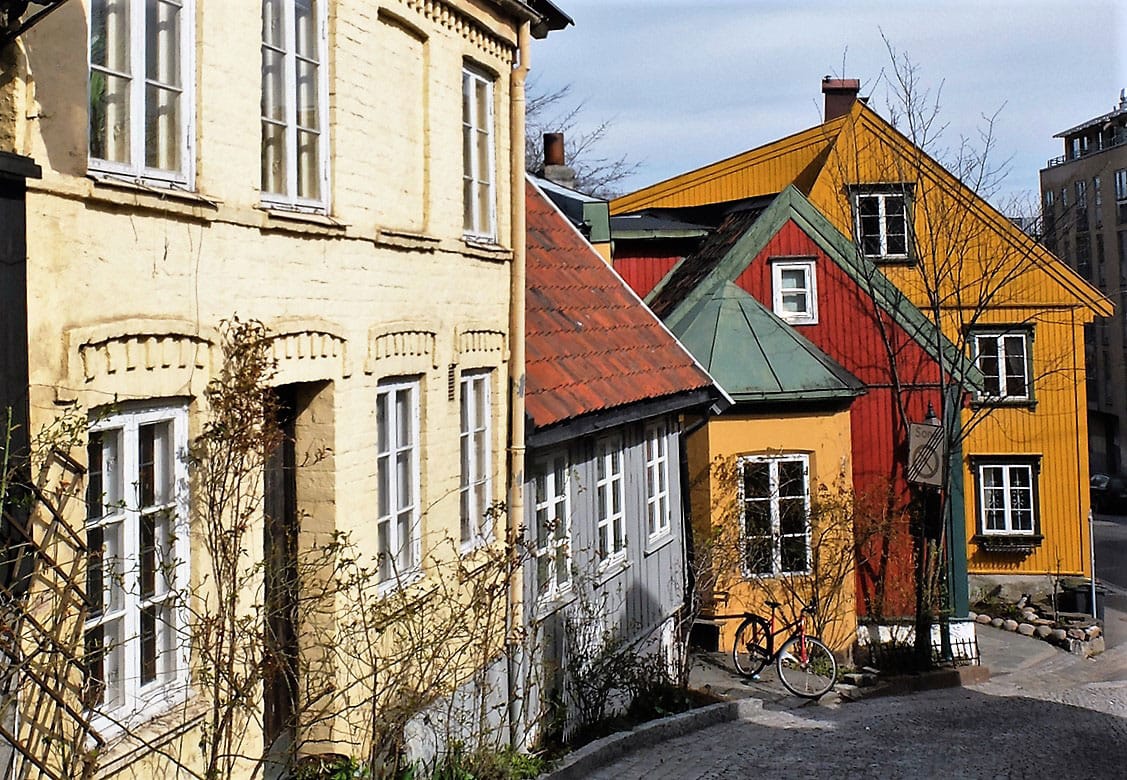Europe in the ’60s slowly filled with brutalist architecture, a style that emerged from the modernist architectural movement. Brutalist architecture is characterized by block-like facades and the frequent use of concrete.
The building exteriors are designed in a way that reveals their functional structure, causing them to seem fragmented and sometimes even odd-looking.
Today, these buildings are home to public libraries, churches, entertainment venues, apartments and more. You might even recognize a few of them, as they are hard to overlook when you pass them by.
Our Spotters live in cities across Europe and have spotted many of these interesting sites.
From their articles, we selected 10 of the (in our opinion) coolest and most outstanding examples of brutalist architecture across the continent.
Banana Flats, Edinburgh
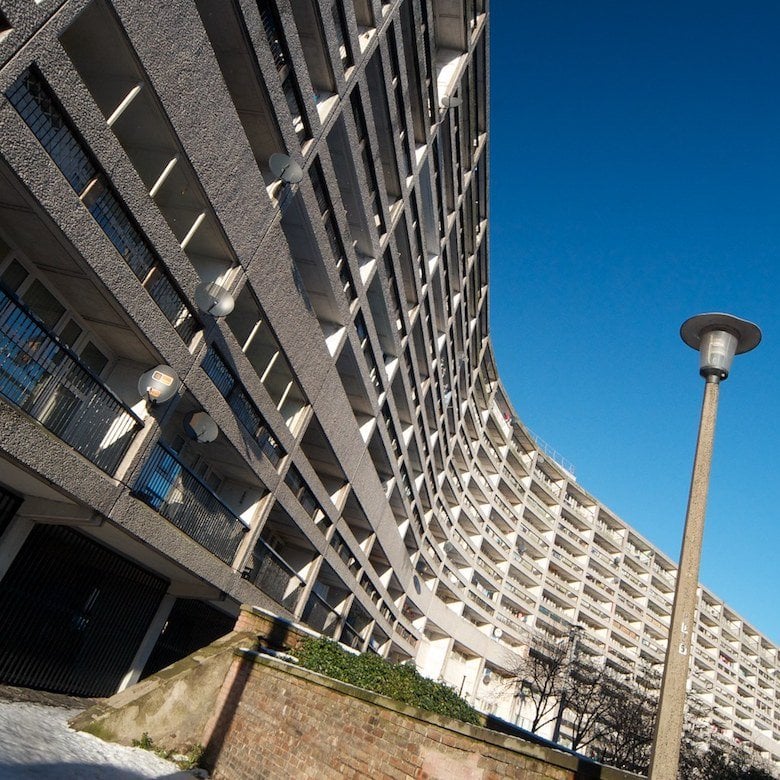
Built in 1963, The Banana Flats, (yes, the name was inspired by the shape of the building), is a fascinating mega-structure.
It’s ten stories high and part of the skyline of Leith. This part of town was previously known for its ghettos and slums and became unsuitable for people to live in, due to deteriorating living conditions that affected many families.
These families sometimes consisted of parents with ten children, all cramped up in a small bedroom apartment. Which eventually led to the construction of this building.
Recently, it was awarded a status of national importance by Historic Environment Scotland, which is an additional reason to view this location if you ever get the chance.
Johannes XXIII, Cologne
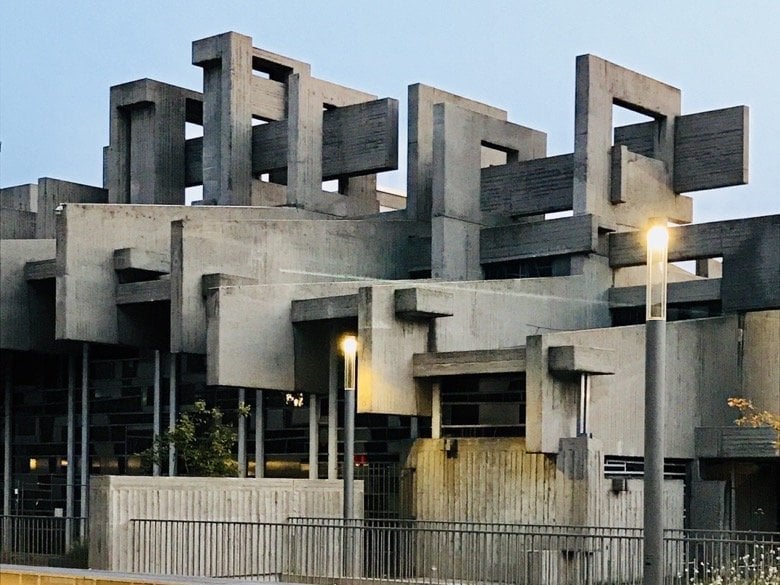
Although it may be unexpected at first glance, this unconventional structure is actually a church.
Built in 1968 by architect Heinz Buchmann and sculptor Josef Rikus, Johannes XXIII church inspires mixed feelings in those who see it – for some, it is an ugly structure, and for others, a masterpiece.
While the exterior construction is dominated by concrete, the interior is much more complex, with coloured glass windows dipping the church in warm light. A rare example of unusual Catholic architecture, this is well worth a visit.
Slovak Radio, Bratislava
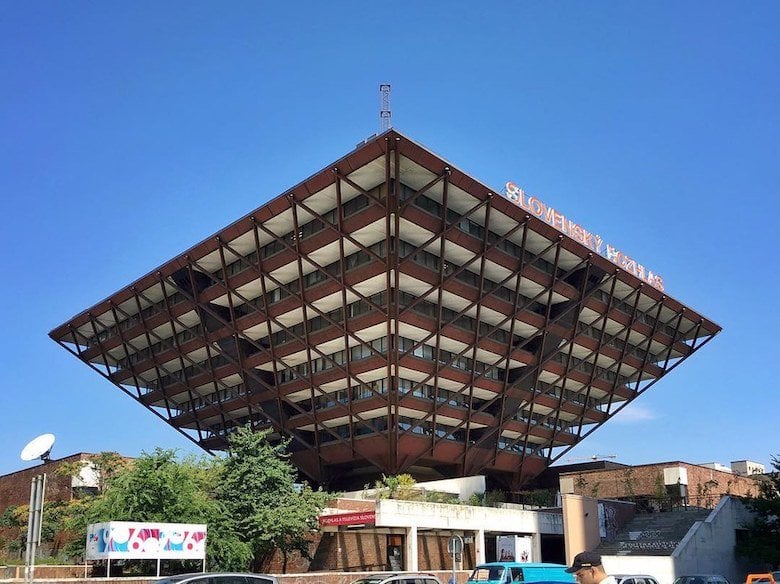
When socialism arrived in Slovakia, Bratislava embraced more provocative forms of architecture.
The brutalist buildings found in Eastern Europe were a way of showing off, and Bratislava became the symbol of this notion.
The results? Some outstanding and strange-looking buildings, such as this upside-down pyramid-shaped Radio Station, Slovak Radio.
The building highlights the Bratislava skyline but is still very much overlooked by tourists.
It was once listed as one of the ugliest buildings in the world but has gained popularity, with many acclaimed architects now coming to its defence.
National Library Kosovo, Prishtina
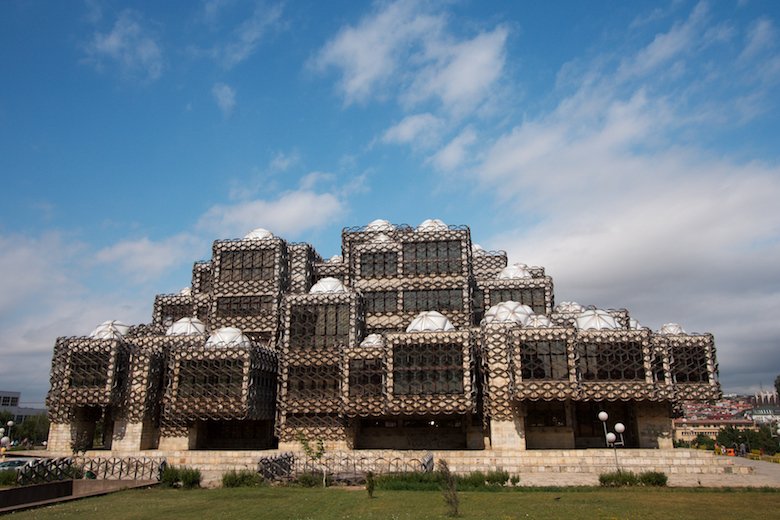
Another piece of architecture considered ugly by some, the National Library of Kosovo is doubtless an interesting structure.
Inspired by Byzantine architecture, the library has 99 domes that provide excellent natural light inside. The astonishing exterior is, of course, complemented by an equally eerie interior, although this does not prevent it from having a calm and relaxed atmosphere.
This is a great place to visit, both as a viewing curiosity and as a place to learn about the cultural and intellectual heritage of Kosovo.
Kozia 9, Warsaw
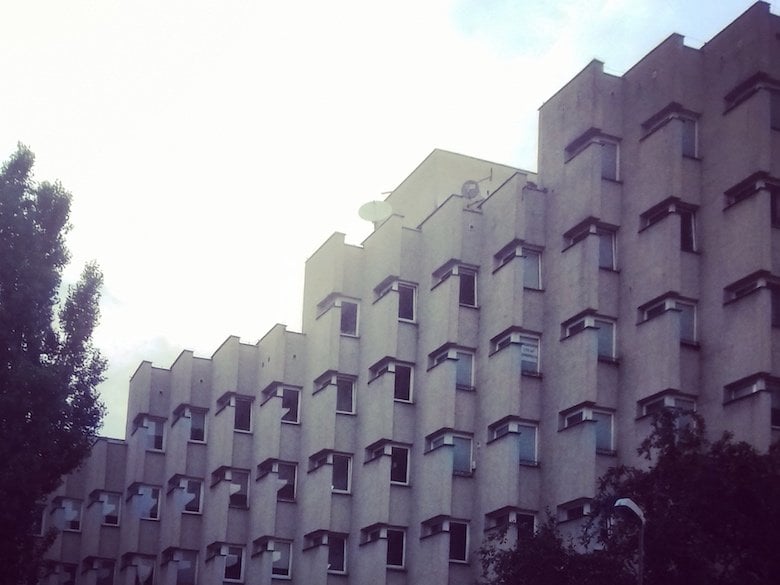
Designed by architects Jerzy Kuzmienko and Piotr Sembrad, Kozia 9 presents diverse appearances to the viewing eye; from one angle, the bold geometrical lines seem abrupt, while from another perspective, they flow harmoniously.
The symmetry and uniform repetition of the building is what some people would describe as “oddly satisfying”. If you visit Warsaw, make sure to search for this interesting work: although you will likely need to ask locals how to find it, as it is purposefully tucked out of sight.
The Barbican Centre, London
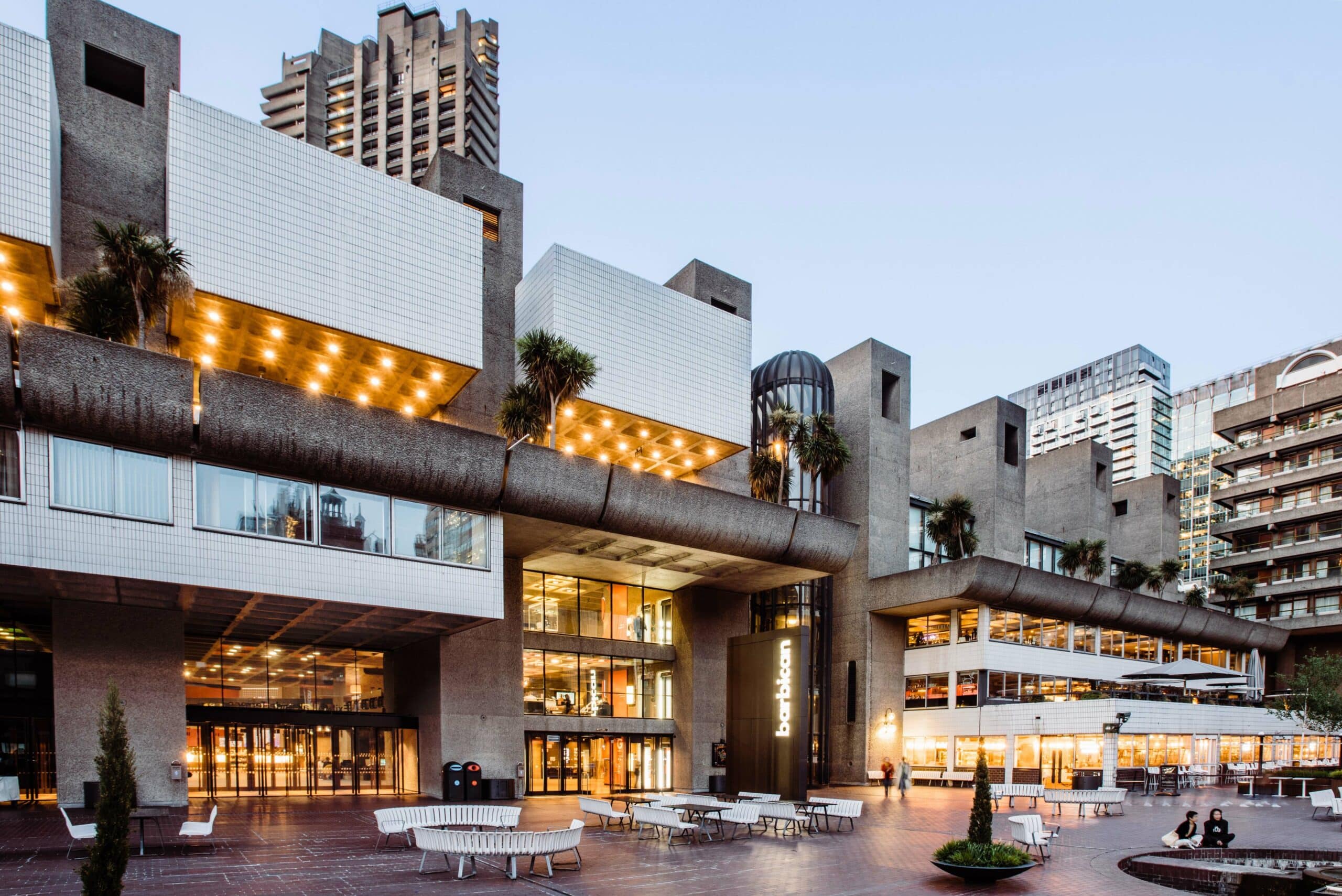
The Barbican Centre is well known for its brutalist style. When it was built in 1960, it was intended to function as a new housing area after the bombing of World War 2.
Nowadays, it’s considered one of the most important cultural centres in London. It offers a wide variety of cultural and arts events such as theatre and music performances, as well as galleries and a cinema.
Blok V, Podgorica
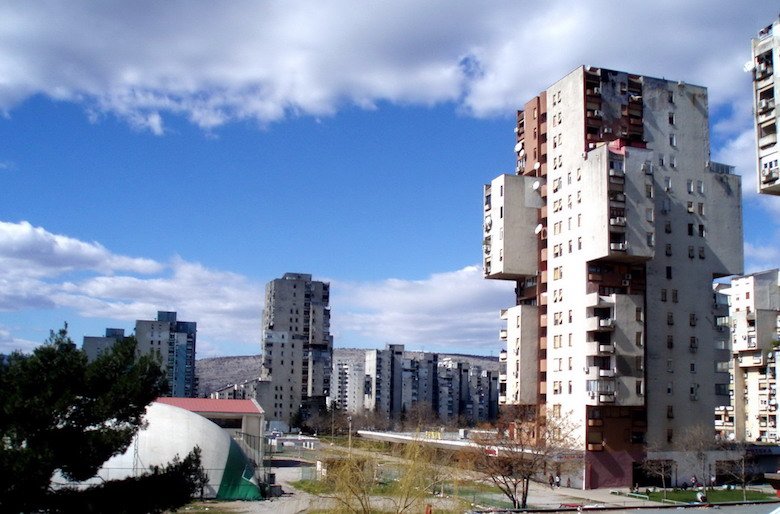
The neighbourhood of Blok V was a planned borough designed in the late 1970s/early 1980s by architect Mileta Bojoviç.
It consists of five residential skyscrapers that are 16-floors high, with asymmetrical outcroppings – an architectural marvel of its time.
Blok V is located in a lively part of the city with cafes, pubs, sports facilities and green spaces.
Bank of Georgia, Tbilisi
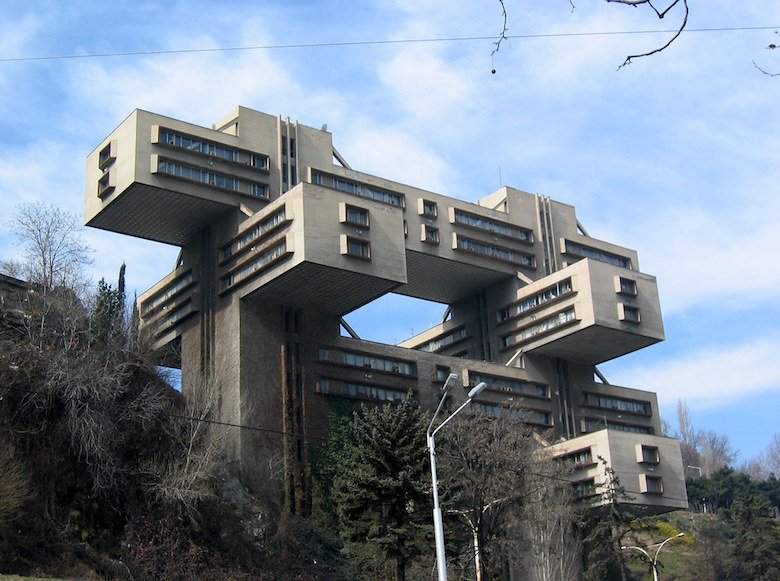
The Bank of Georgia headquarters, designed by architects George Chakhava and Zurab Jalaghania and finished in 1975, is another example of Soviet brutalist architecture.
The building may look like a giant pile of Jenga blocks, but the concept behind its construction was actually an early application of open city planning.
The idea is to build upward so that empty spaces below are left to nature, creating a harmonious interaction between the city and greenery.
The Pyramid, Tirana
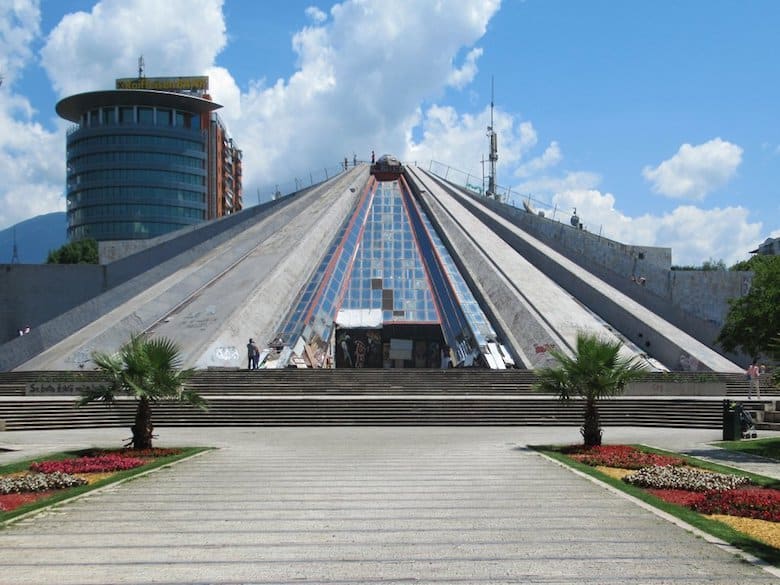
Another pyramid-shaped building, although this time it’s the right way around, the Pyramid of Tirana used to be a museum made in remembrance of dictator Enver Hoxha.
It was co-designed by none other than his own daughter Pravera Hoxha.
Nowadays, it’s used as a conference centre or entertainment venue. When it was just finished, it was said to be one of the most expensive pieces of architecture in the history of Albania.
A cool aspect of this building is that you can actually climb it – so grab a beer and some friends for a chill evening with elevation.
Wotruba Church, Vienna
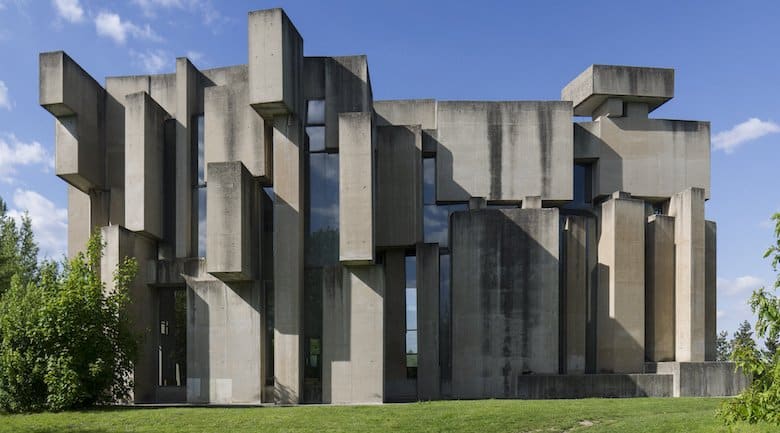
Architect Fritz Wotruba designed the Wotruba church in 1976. For church-goers, this is a place of solitude and spiritualism.
At the same time, artists treasure this as a gem of brutalist abstract art – a pile of 152 blocks with no apparent symmetry somehow creating a harmonious whole.
The building is located relatively far from the city centre but worth visiting.
Aside from the viewing pleasure (and photo ops), parks and an open-air planetarium are nearby.
One of our Kyiv Spotters, Alex, is an architect and very interested in brutalism. If you’re interested in learning more, check out this book he wrote about Soviet modernism and brutalism in Ukraine!
More? We have local spots in 80+ cities!
